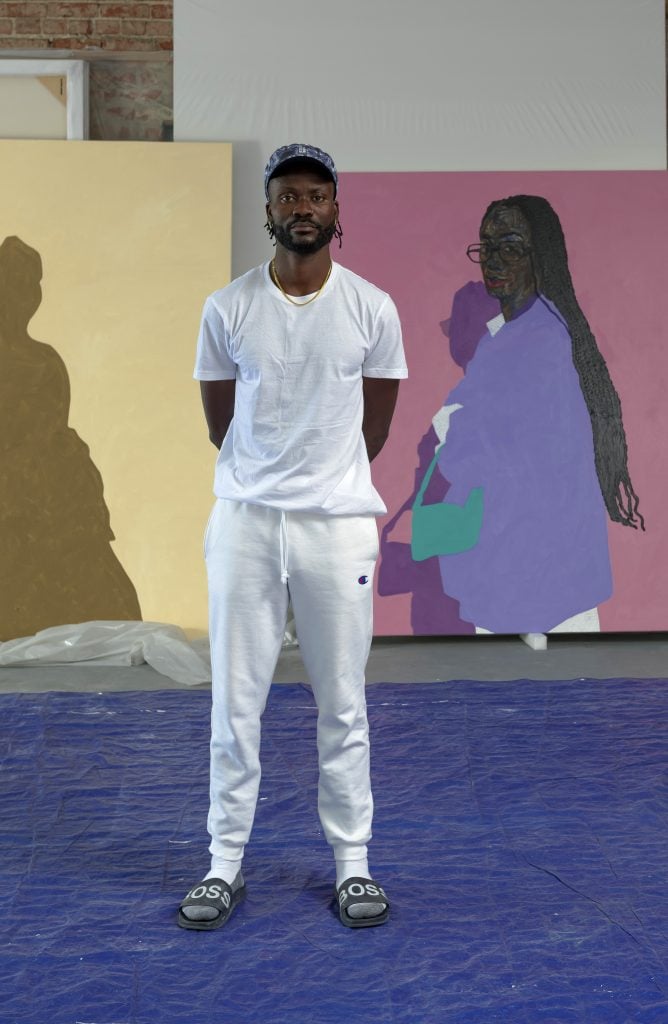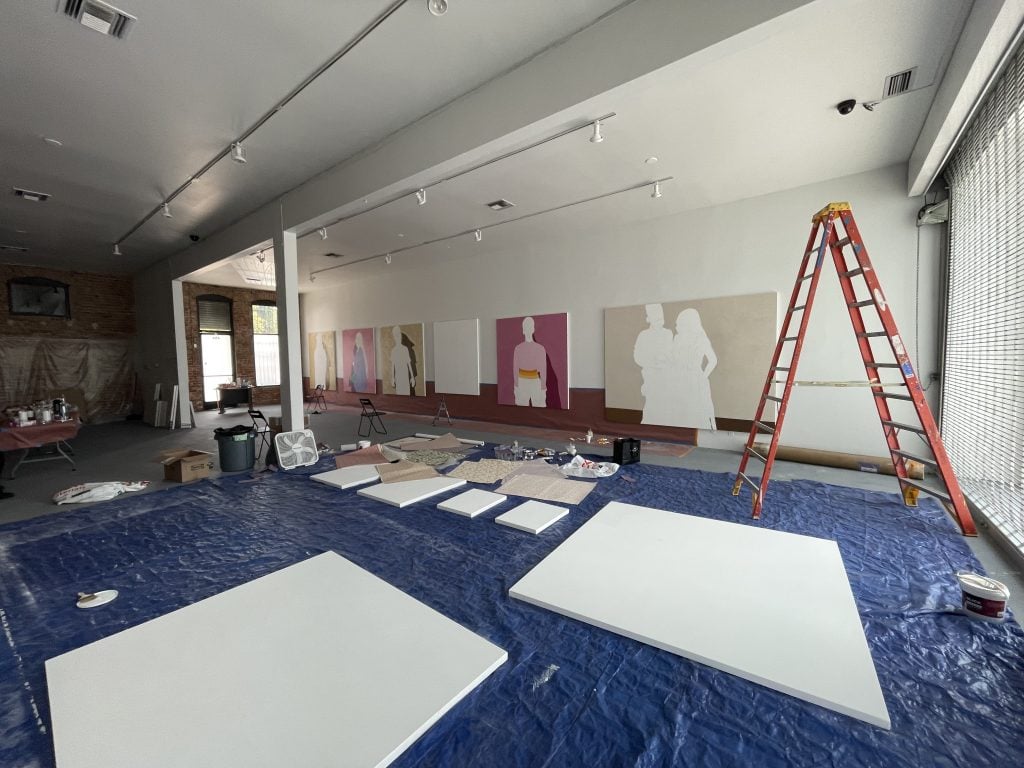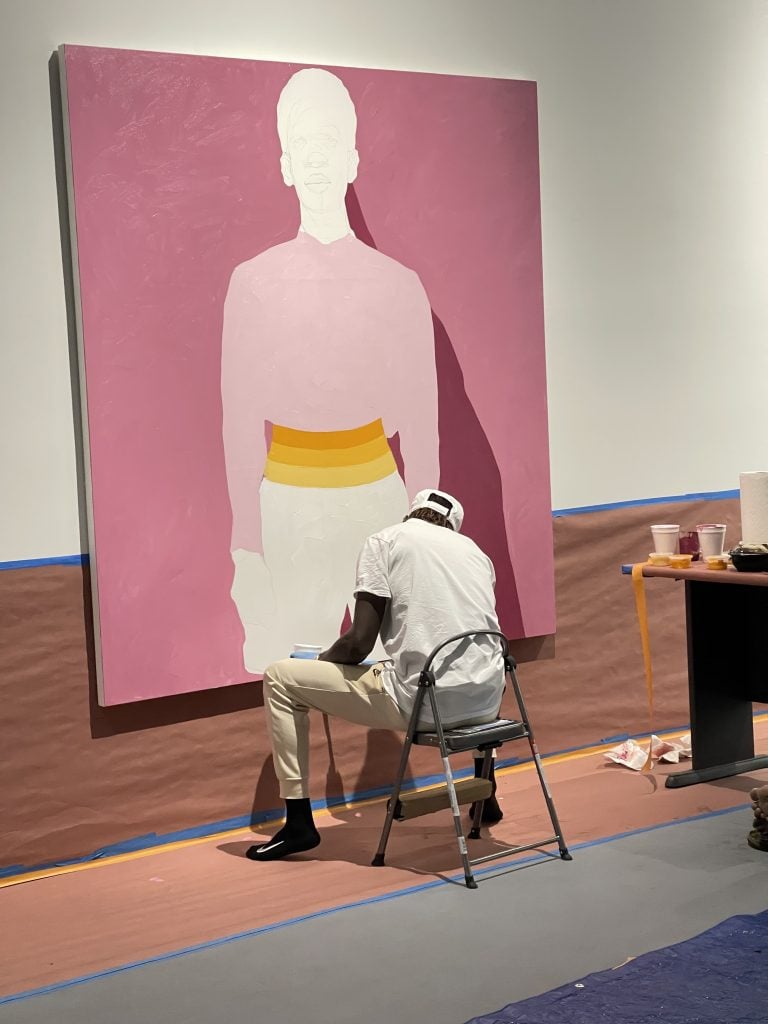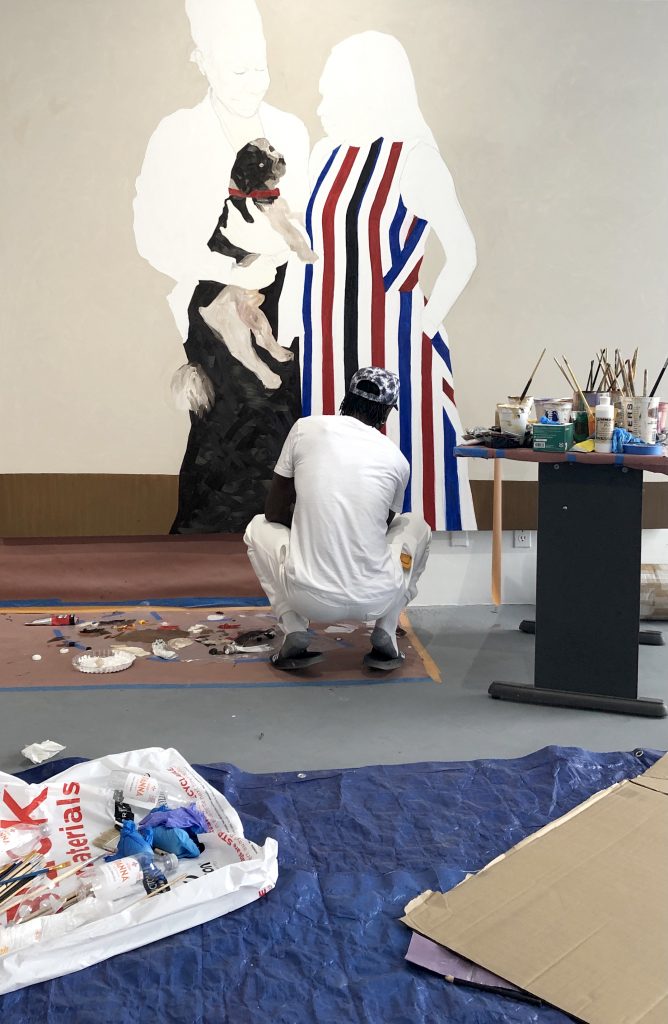Studio Visit
Art Star Amoako Boafo on Listening to Afro-Pop in the Studio, and His Newfound Interest in Painting Shadows
The Ghanian artist's latest exhibition opens at Robert Projects in Los Angeles this week.

The Ghanian artist's latest exhibition opens at Robert Projects in Los Angeles this week.

Katie White

In the past few years, Ghanaian artist Amoako Boafo has electrified the art world with his captivating and contorted portraits of Black figures against bright, often monochromatic backgrounds. Rendered in pulsating, evocative marks, the portraits have often conjured up comparisons to the Austrian Expressionist Egon Schiele.
Boafo, who is based in Vienna, has said he wanted his paintings to serve as a space for Black people to exist confidently and joyfully. While much attention has been paid to his meteoric art market ascent, we wondered, what his day-to-day practice actually looks like.
Ahead of his upcoming exhibition “Singular Duality: Me Can Make We” at Robert Projects, we caught up with Boafo from his Los Angeles studio, where he told us about his new interest in painting cast shadows and his Los Angeles-inspired mood board.

Amoako Boafo’s Los Angeles studio, 2021. Courtesy of Roberts Projects.
What are the most indispensable items in your studio and why?
Rags or paper towels. The former helps greatly when I am transferring gift wrap paper onto canvases, a technique I am continuing to explore in my practice. Gloves also make things easier, by allowing the paint to go on smoothly when I’m working on my characters’ faces and other exposed body parts. And a cutter tool or utility knife, which assists in cutting canvases, plastics, sharpening pencils—cutting everything basically!
Is there a picture you can send of your work in progress?

Amoako Boafo at his Los Angeles studio, 2021. Courtesy of Roberts Projects.
What is the studio task on your agenda tomorrow that you are most looking forward to?
Painting the cast shadows of my characters. The works I’m making now are meant for my upcoming solo exhibition “Singular Duality: Me Can Make We” with my Los Angeles gallery Roberts Projects. The shadow is a new allegorical motif that will debut in this show.
What kind of atmosphere do you prefer when you work? Do you listen to music or podcasts, or do you prefer silence? Why?
I prefer listening to music, specifically Afro-pop, because music always sets the right working mood for me.
What trait do you most admire in a work of art? What trait do you most despise?
I admire greatly complex simplicity in a work of art. So I guess that means the opposite of this is what I despise…
What snack food could your studio not function without?
That depends on which part of the world I am currently in. My studio in Accra, Ghana, would not function without sugar canes.
Who are your favorite artists, curators, or other thinkers to follow on social media right now?
Writer Belinda Kazeem-Kaminski, Patrick Eugene, Zéh Palito, Henry Mzili Mujunga, Natalie Terenzini, Zandile Tshabalala, curator Larry Ossei-Mensah, Danny Dunson, and Florine Démosthéne.

Amoako Boafo at his Los Angeles studio, 2021. Courtesy of Roberts Projects.
When you feel stuck in the studio, what do you do to get un-stuck?
I switch between paintings when I feel stuck; it’s one of the reasons I mostly work on more than one painting at a time.
What is the last exhibition you saw (virtual or otherwise) that made an impression on you?
“A New Country” by Kaloki Nyamai at Gallery 1957 in Ghana.
If you had to put together a mood board, what would be on it right now?
This is very L.A. specific, but it would be: tennis, the sun setting on a beach, people of color in happy confident poses, pops of colors everywhere, and half-finished sketches.